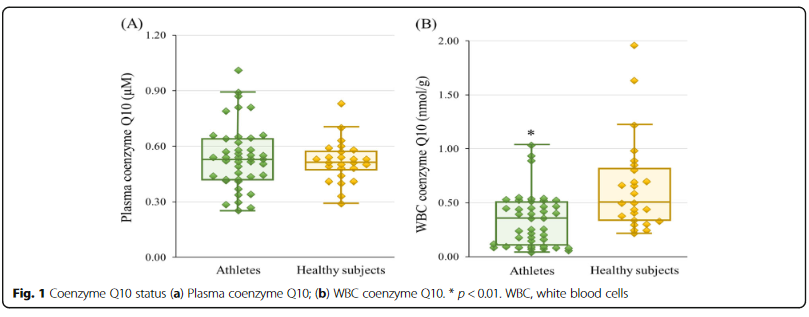Featured Scientist
Author published in" Society of Sports Nutrition"affiliate to
Chien-Chang Ho
Department of Physical Education,
Fu Jen Catholic University, New Taipei, Taiwan
Article published in
"Journal of the International Society of Sports Nutrition" Article number: 5 (2020)
Coenzyme Q10 status, glucose parameters, and antioxidative capacity in college athletes
Background
Glycemia is related to energy production during exercise. Coenzyme Q10 is an antioxidant that participates in adenosine triphosphate synthesis in mitochondria. The aim of this study was to investigate the level of coenzyme Q10, glucose parameters, and antioxidant capacity in athletes.
Methods
This study was designed as a cross-sectional study. Well-trained college athletes (n = 43) and age-gender matched healthy subjects (n = 25) were recruited from a college. The levels of glucose parameters, oxidative stress, antioxidant enzymes activity, Trolox equivalent antioxidant capacity (TAC), and coenzyme Q10 status were measured in the present study.
Results
The athletes had a significantly lower level of white blood cells (WBC) coenzyme Q10 than the healthy subjects (0.34 ± 0.24 vs. 0.65 ± 0.43 nmol/g, p < 0.01); however, no significant difference was detected in plasma coenzyme Q10 between the two groups. Regarding the glucose parameters, the athletes had significantly higher values for HbA1c (5.5 ± 0.3 vs. 5.3 ± 0.3%, p < 0.05) and quantitative insulin sensitivity check index (QUICKI, 0.37 ± 0.03 vs. 0.34 ± 0.03, p < 0.05), and lower homeostatic model assessment-insulin resistance (HOMA-IR, 1.5 ± 0.8 vs. 2.9 ± 3.8, p < 0.05) than the healthy subjects. A higher level of TAC was found in the athletes (serum, 5.7 ± 0.3 vs. 5.4 ± 0.2 mM Trolox; erythrocyte, 10.5 ± 0.6 vs. 10.0 ± 0.5 mM Trolox, p < 0.05). In addition, WBC coenzyme Q10 status was significantly correlated with catalase activity (r = 0.56, p < 0.01), GPx activity (r = 0.56, p < 0.01), serum TAC (r = 0.54, p < 0.01), fasting glucose (β = − 1.10, p < 0.01), HbA1c (β = − 0.82, p < 0.01), HOMA-IR (β = − 1.81, p < 0.01), and QUICK (β = 0.08, p < 0.01).
Conclusions
Athletes may suffer from a marginal coenzyme Q10 deficiency, and the level was related to glycemic control and antioxidant capacity. Further interventional studies are needed to clarify an adequate dose of coenzyme Q10 supplementation in athletes to optimize their coenzyme Q10 status and athletic performance or recovery during exercise. [ Full article]

Keywords: Athletes, Coenzyme Q10, Glucose parameters, Antioxidant capacity, Sport nutrition
35 views